Everyone stresses about winter weather and temperatures, but chickens may struggle more in the summer than in the winter.
While most people worry about the upcoming cold weather, chickens often have a harder time during the summer heat.
Chickens do best in milder climates, between 55°F and 75°F. The excessive heat and humidity put extra strain on their bodies.
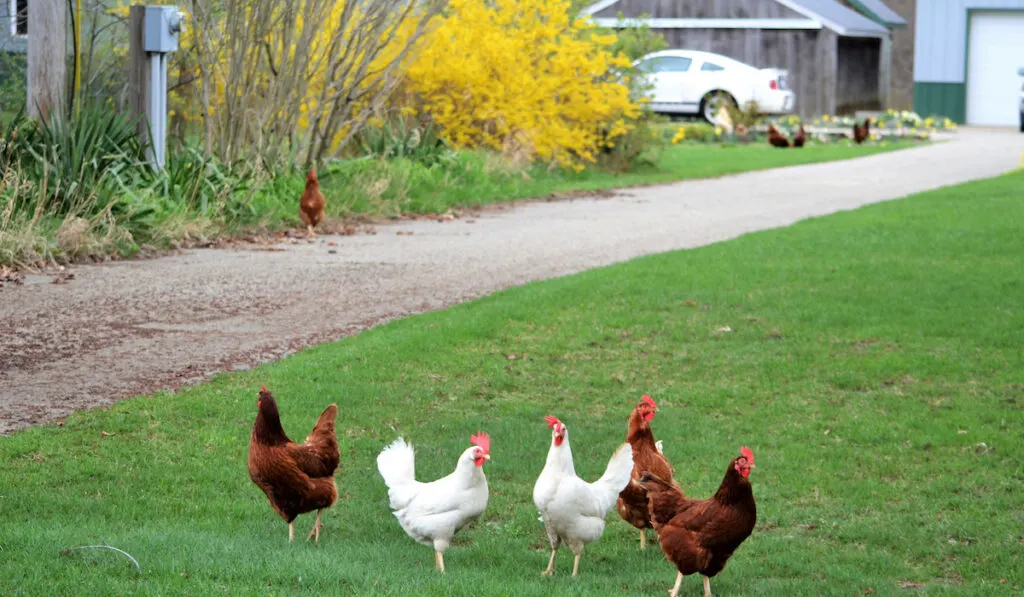
Chicken’s wattles and combs have many blood vessels that help the birds maintain a comfortable body temperature.
In other words, chickens with big combs and wattles are typically more comfortable in the heat and more susceptible to frostbite in the winter.
When deciding which chicken breeds to raise, keeping Southern California’s weather conditions and climate in mind is important.
Here are the five best chicken breeds for warm climates.
Table of Contents
The Climate of Southern California
| Winter Temperatures in Southern California | Southern California winters are mild, with temperatures averaging in the 50s and 60s (°F); further north, the weather turns cooler. |
| Summer Temperatures in Southern California | The dry season and hottest months last from May to October. Temperatures average in the mid-80s°F, but they drop to the low 60s (°F) at night. |
The climate in Southern California is typically warm and comfortable, particularly in the winter. However, the weather on the coast and the weather inland are different.
Coastal Southern California
The climate along the coast, from Santa Barbara to San Diego, is often regarded as one of the best in the United States.
Summer daytime temperatures tend to be mild, with a few exceptions.
In July, for instance, Santa Monica has typical temperatures of 75°F, whereas Los Angeles sees usual highs of 84°F.
Even though there are likely to be some really hot days, summers are generally mild and enjoyable.
Daytime highs along the coast in the winter average in the mid-60s (°F), with some days in the 70s (°F) occurring on rare occasions.
Inland Southern California
Beginning around 35 miles inland from the coast, this region of Southern California extends eastward to the state lines with Arizona and Nevada.
The winter days are quite warm in this large inland section, while the nights are significantly colder than in the coastal region.
Inland Southern California can get extremely hot throughout the summer.
Most years, July is the hottest month. When the typical temperature in Rancho Cucamonga is 91°F, and the normal high in Palm Springs is 108°F.
Summer may be challenging for chickens in these regions.
Best Chickens for Laying Eggs in Southern California
| 1 | Barred Plymouth Rock | Lays about 200 eggs each year Dual-purpose breed Docile, kid-friendly chickens Low maintenance |
| 2 | Leghorn | Lays about 150-320 eggs each year Not ideal for beginners and children Flighty Great forager |
| 3 | New Hampshire Red | Lays about 200 eggs each year Easy to handle and docile, perfect for beginners Hardy |
| 4 | Brahma | Lays about 130-150 eggs each year Dual-purpose breed Excellent for children and beginner chicken keepers Hardy and low maintenance |
| 5 | Andalusian | Lays about 150-165 eggs each year Not ideal for beginners and children Low maintenance |
1. Barred Plymouth Rock
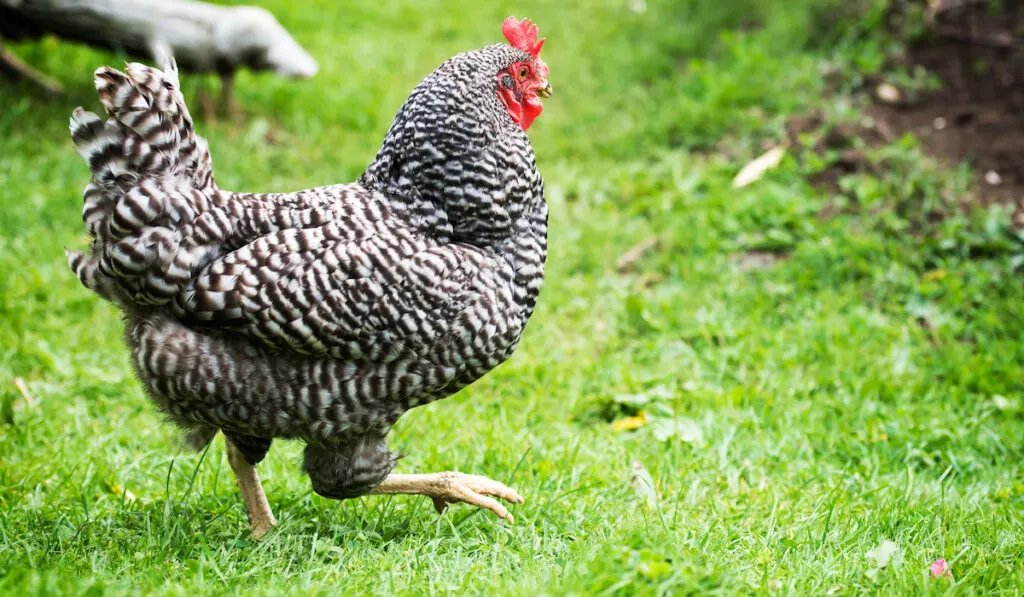
In addition to being one of the most well-known chicken breeds in the United States, the Plymouth Rock is also one of the oldest.
This bird was among the first recognized heritage breeds and was given its name in honor of the historic site where the Pilgrims first set foot in the New World.
When it comes to raising chickens, the Plymouth Rock is one of the easiest breeds to raise.
They are great for families just starting out in chicken-keeping since they are easy for inexperienced guardians and small kids.
In addition to being extremely likable, Plymouth Rock chickens have several practical applications.
A Plymouth Rock hen has value as both a layer of eggs and a source of meat.
Plymouth hens are highly regarded for the big, dark-brown eggs they produce.
They lay an average of 200 eggs every year, which is around 4 eggs per week.
Broodiness in Plymouth Rock hens is common. They aren’t notoriously maternal, but they have a tendency toward it.
The Plymouth Rock breed of hens is highly resilient, needs very little care, and can thrive in both hot and cold environments.
2. Leghorn
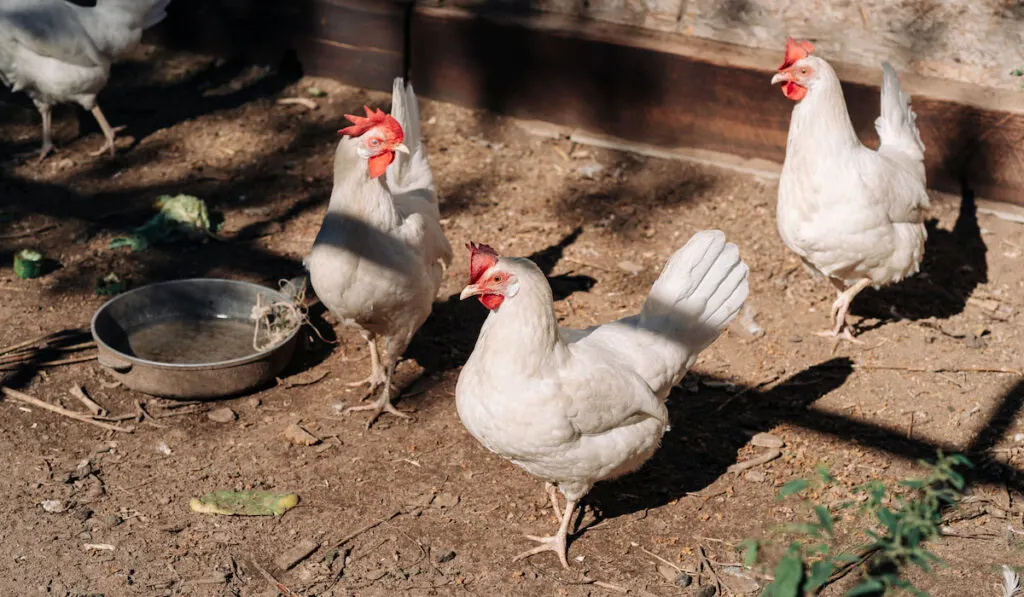
The Leghorn chicken, originally from Northern Italy, is one of the most well-known chicken breeds worldwide.
Leghorn chickens are lively, clever, and resourceful birds. They’re always scratching about in the dirt and looking for something to eat.
Leghorns are great foragers but modest eaters, and they can lay many eggs on just a little feed.
Bear in mind, though, that some of the farmers find them to be a nuisance because of their noisy nature and love for flying at great heights.
Leghorns aren’t exactly the most kid-friendly chickens, either.
Nonetheless, if high egg yield is a priority, these remarkably resilient and easy-to-care-for birds can be an excellent choice for many.
Egg-laying in hens normally begins between the ages of 24 and 30 weeks.
In terms of egg size and weight, a Leghorn hen may typically lay anything from 150 to 320 large white eggs per year.
Leghorn hens have a shorter lifespan than most other chicken breeds because they produce so many eggs. A laying hen’s lifespan is typically between 4 and 6 years.
3. New Hampshire Red
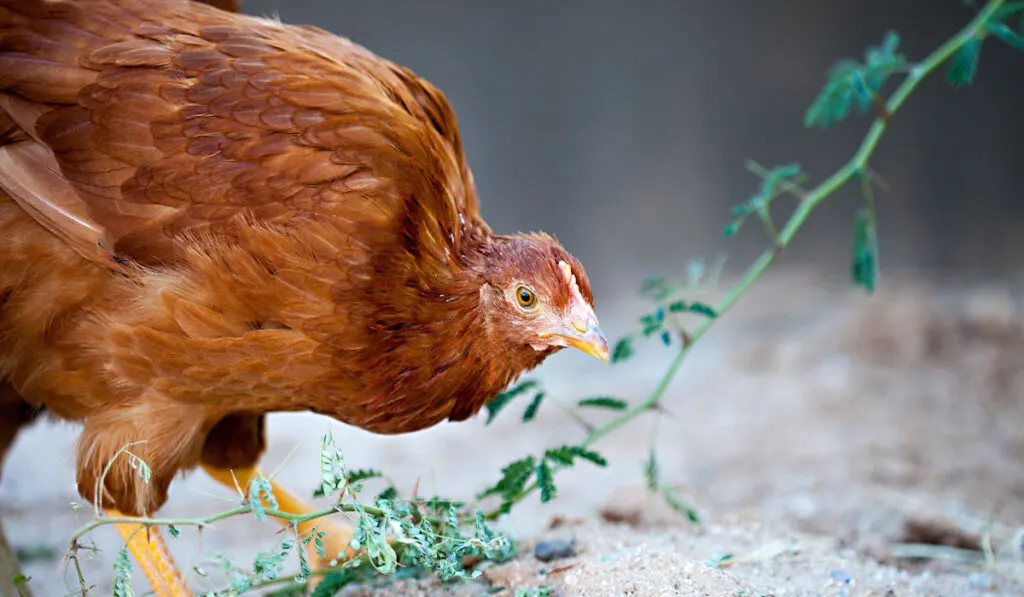
The breed name “New Hampshire Red” comes from the U.S. state of the same name. They are a newer breed, having been included in the Standard only in 1935.
The chickens are friendly and peaceful, making them easy to care for, and they are a great choice for beginners and kids.
New Hampshire Red hens are known for laying big, brown eggs of the highest quality.
They lay about four eggs per week, or about 200 eggs per year.
After a productive first two or three years, their output begins to decrease gradually, but they are able to lay eggs for up to a decade.
They do well in a run or when allowed to roam freely, and because they are not strong fliers, they do not require extensive fencing.
As a breed, New Hampshire Reds are hardy, easy to take care of, and may live up to 12 years with proper care.
4. Brahma
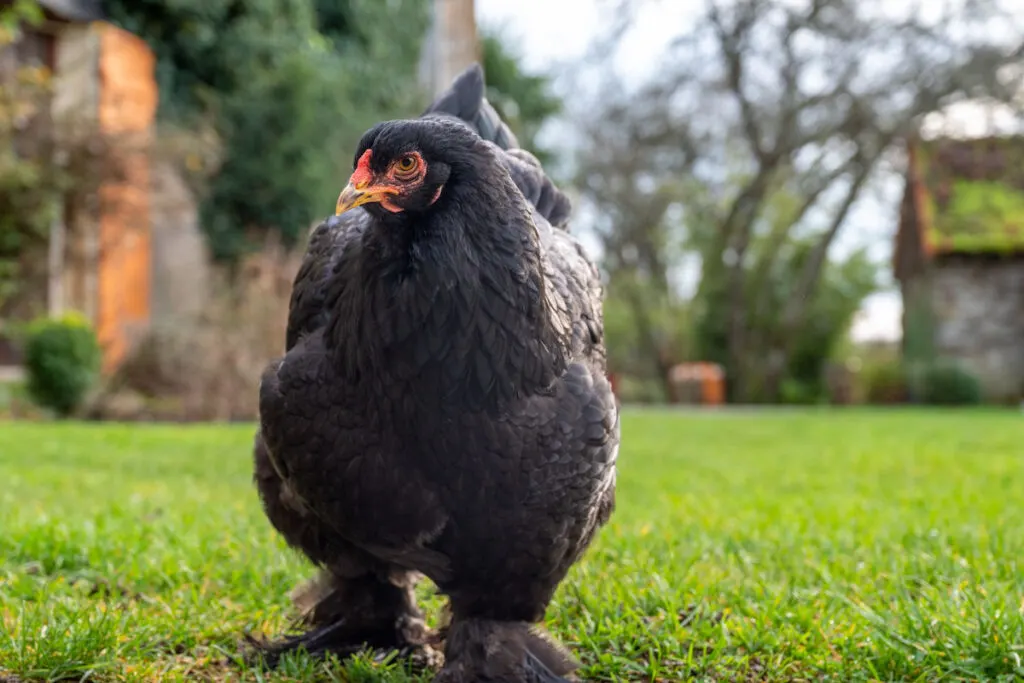
Due to its massive size, incredible vitality, and amazing strength, the Brahma chicken is often referred to as the “King of All Poultry.”
Developed in the United States from imported Chinese birds in the 1850s, the Brahma quickly became the most popular American meat breed.
The Brahma chicken is one of the largest breeds of poultry in the world.
Brahmas roosters should weigh between 10 and 12 pounds, while hens should weigh between 8 and 9.5 pounds, according to the American Poultry Association.
Those birds are great fits for any flock and may even help protect the other chickens from some predators.
Regardless of their size, they are tame birds that are perfect for novices or families with young children.
The average annual egg production of a Brahma hen is between 130 and 150 eggs.
These eggs can range in size from medium to large and are typically a light brown color.
The Brahma chicken’s resilience is an additional advantage. The climate is not an issue for these birds.
5. Andalusian
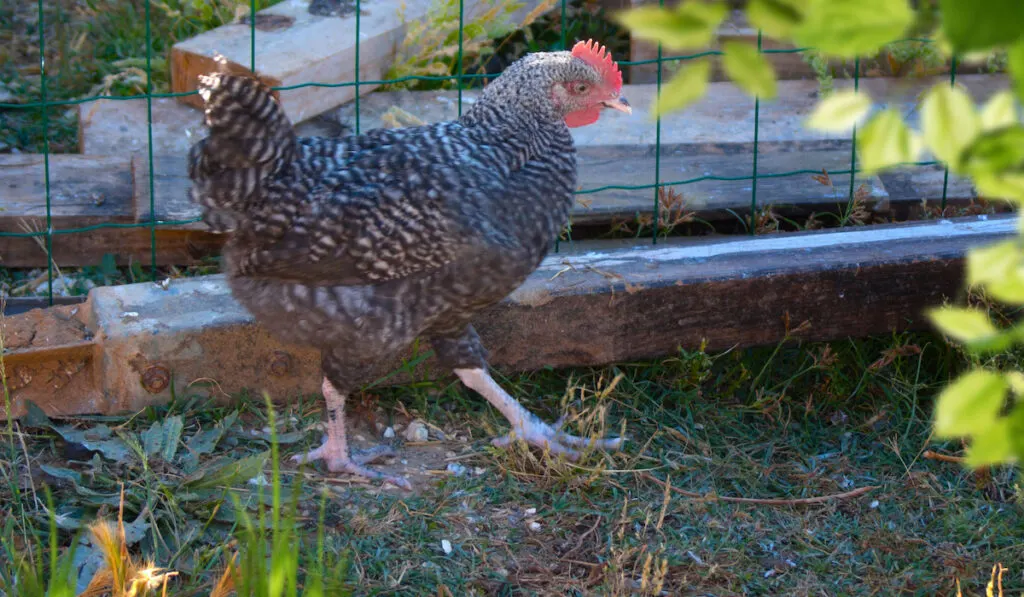
Originating in the Mediterranean region, this blue-feathered chicken thrives in warm climates.
Because of their toughness and independence, Andalusian chickens do best when given plenty of room to wander.
Andalusians are known for being sociable and curious.
Andalusians are not the kind of birds who enjoy human interaction too much. They are not as affectionate as other chickens and don’t enjoy being petted.
This is why Andalusians should only be kept by intermediate or advanced poultry keepers. They are also not a good fit for households with kids.
In terms of egg production, roughly three eggs per week, or approximately 150–165 eggs per year, can be expected from these hens.
Although they do not perform well in extremely cold temperatures, the hens are known to lay well throughout the colder months.
Andalusians have a higher heat tolerance than other chickens but still require a cool, shady place to rest when the weather gets too hot and humid.
Final Thoughts
When choosing a chicken breed for the hot Southern Californian summers, it’s important to consider not just how many eggs it lays but also how well it handles the heat.
In general, birds are more able to withstand cold temperatures than hot ones. This is because their entire bodies are covered in feathers, leaving only their combs and wattles to radiate heat.
All of the breeds described above are great layers and can tolerate hotter conditions than most other hens, so they should easily meet your needs.
Resources
- https://esi.edu/what-is-winter-like-in-california-what-you-need-to-know-when-beginning-english-classes/
- https://en.wikipedia.org/wiki/Climate_of_Los_Angeles
- https://digimarconlosangeles.com/southern-california-climate/
- https://www.heritageacresmarket.com/leghorn-chicken/
- https://www.thehappychickencoop.com/leghorn-chicken/
- https://www.heritageacresmarket.com/plymouth-rock-chicken/
- https://www.thehappychickencoop.com/plymouth-rock-chicken/
- https://www.omlet.co.uk/breeds/chickens/new_hampshire_red/
- https://en.wikipedia.org/wiki/New_Hampshire_Red
- https://www.chickensandmore.com/brahma-chicken/
- https://www.heritageacresmarket.com/brahma-chicken/
- https://cs-tf.com/andalusian-chicken/
- https://www.thehappychickencoop.com/andalusian-chicken/
